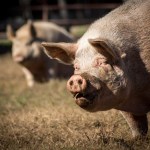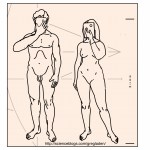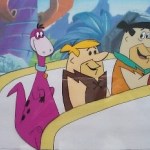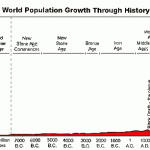humans
As researchers continue to document the intelligence and emotional acuity of animals, beasts begin to look more like brethren, and food more like friend. On Pharyngula, PZ Myers shares a decision by the U.S. Fish and Wildlife Service that gives chimpanzees used in research the same endangered status as their wild cousins. According to Science, "organizations that want to continue working with chimpanzees will have to document that the work enhances the survival of the species and benefits chimps in the wild." PZ writes, "I want to see more studies done on our closest relatives — but it…
Remember the last Olympics, during the parade, where instead of seeing the athletes march along grouped by country, we saw unidentifiable people who were all either taking selfies or grabbing videos of everything going on around them, but we couldn't tell who they were because their cell phones were totally covering their faces? These days every time a thing happens and we see a pic or video of it, it seems, everybody else has got a cell phone in their face. I suppose that is how we manage to have pics or videos of everything that ever happens.
The above image is part of the plaque attached…
“It surprises me how disinterested we are today about things like physics, space, the universe and philosophy of our existence, our purpose, our final destination. It’s a crazy world out there. Be curious.” -Stephen Hawking
One of the most existential questions humanity has ever asked is the question of our origins: where do I come from? Inspired by Ben Kilminster's writings, here's the entire history of the Universe -- that's led up to the existence of you -- in just 10 sentences*.
Image credit: Amber Stuver of http://www.livingligo.org/.
1.) At some point in the…
Image of yellow lab from Wikimedia Commons
New genetic analyses supports the argument that the domestication of man's best friend coincided with the advent of argiculture and human settlements. Researchers Erik Axelsson (Uppsala University, Sweden) and colleagues present evidence suggesting that wolves became domesticated as they increasingly scavenged in the human settlements. The researchers sequenced DNA from 12 wolves and 60 dogs to find areas that evolved under selection pressure. What they found were differences in genes relaed to the development of the…
tags: Sanderlings Schiermonnikoog, birds, birding, wildlife, humans, conservation, education, streaming video
This is a sweet little video about the Sanderlings that nested on the Niederlande beach of Schiermonnikoog. However, in just a few short years, they are rarely seen there. Why? This video provides some hypotheses.
There is a brief mention of a book (in Dutch) at the end. I've never seen it, don't own it and have absolutely no vested interest in it or anything involved with it.
tags: nature, animals, streaming video
This video points out that people are not the center of the universe, as so many of us think we are. And one of those animals that are superior to humans are the penguins. Can you think of why that might be?
Swine flu has made the world all too aware of the possibility of diseases making the leap from animal hosts to human ones. Now, we know that another disease made a similar transition from chimpanzees to humans, several thousand years ago. This particular infection is caused by a parasite, and a very familiar and dangerous one - Plasmodium falciparum, the agent responsible for malaria.
Transmitted by the bite of mosquitoes, P.falciparum infects over 500 million people every year. Its closest relative is a related parasite, Plasmodium reichenowi, which infects chimpanzees. Leading an…
While the rapid expansion of human cities has been detrimental for most animals, some have found ways of exploiting these brave new worlds and learned to live with their prolific inhabitants. The Northern mockingbird is one such species. It's very common in cities all over America's east coast, where it frequently spends time around humans. But Douglas Levey from the University of Florida has found that its interactions with us are more complex than anyone would have guessed.
The mockingbird has the remarkable ability to tell the difference between individual humans, regardless of the…
Immunity to viral infections sounds like a good thing, but it can come at a price. Millions of years ago, we evolved resistance to a virus that plagued other primates. Today, that virus is extinct, but our resistance to it may be making us more vulnerable to the present threat of HIV.
Many extinct viruses are not completely gone. Some members of a group called retroviruses insinuated themselves into our DNA and became a part of our genetic code. Indeed, a large proportion of the genomes of all primates consists of the embedded remnants of ancient viruses. Looking at these remnants is like…
Among the non-coding DNA that composes a large percentage of the genomes of humans and other eukaryotic organisms, pseudogenes are genes that were once active but were rendered defunct by mutations at some point in evolutionary history. But some pseudogenes may regain their functionality. A study published in PLoS Genetics last week revealed that a gene that codes for a member of the immunity-related GTPase protein family, IRGM, was subject to a frameshift mutation in an ancestor of primates 40 million years ago, due to insertion of a small fragment of DNA. The non-functional pseudogene…
The American Association of Physics Teachers just published a study of 1,000 likely U.S. voters about science, religion, evolution, and creationism. The results are frightening. Here are some of the "highlights" of their study:
38% of Americans are in favor of the teaching of religion in public school science classrooms.
65% of Americans do not think that it is an important science goal to understand the origin and diversity of biological life on Earth.
47% of Americans believe that the earliest humans lived at the same time as the dinosaurs.
21% of Americans do not believe that the…
This is some very basic biology: when resources are unlimited and there are no pressures on a species, its population grows exponentially. There's also no evolution other than random mutations; without selection pressures (regardless of whether it's natural or artificial), the genetic information content of a species doesn't change appreciably.
Biologists make use of this to perform tests on certain cells. If you simply put a population of cells in a petrie dish and left them there, they start out by doing this:
They divide. They take over the dish. But then, they run out of room. And when…





